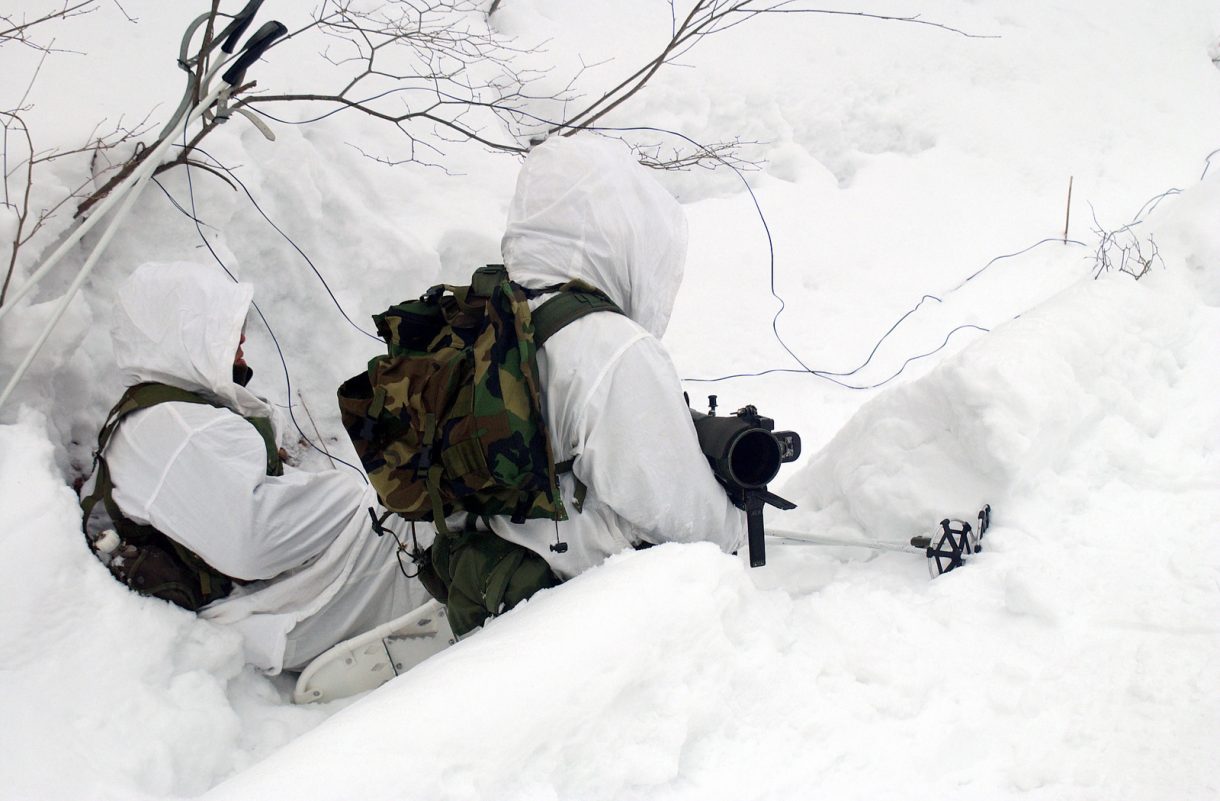Siachen deceivingly means “the place of roses.” Today it is known as the highest battleground in the world.
Indian and Pakistani soldiers have been manning this frozen battleground since 1984 – when India launched Operation Meghdoot to assert control over these maddening heights.
But, many daring soldiers paved the path for this operation many years prior. One such daring mission was conducted by two Helicopter pilots whose maiden landing of French-origin helicopters, called Aloutte III, at the Siachen Glacier marks a milestone in the history of the Indian Air Force’s (IAF) operation in the region.
Air Vice Marshal Manmohan Bahadur narrated the story of the hair-raising maiden landing of a helicopter in the Glacier in September 1978 to the EurAsian Times.
He was a green pilot with barely two years of service. Immediately after graduating from the Helicopter Training Squadron, at the age of 23 years, he got posted to the 114 Helicopter Unit of the IAF operating in Jammu. The IAF sent him on temporary duty to Leh.
By this time, the Indian Army, alarmed by a map showing the Siachen Glacier as part of Pakistan, had started carrying out the reconnaissance of the Glacier under the guise of mountaineering expeditions.
And the task of delivering fresh ration and collecting mail was given to the helicopter pilots.
“My logbook shows September 20, 1978, as the date when the first air sortie on Siachen was launched by 114 HU,” AVM Bahadur told the EurAsian Times.
Chetak Chopper, with its bubble canopy, started the arduous journey from the snout of the Glacier. Thereafter the route was laden with snow or crevasses, in the absence of skis on the aircraft, a landing would have been a perilous one.

The helicopter reached Camp I and Camp II, and the load was thrown out of the hovering helicopter. Flying at the limits of the aircraft required meticulous calculation of the ‘All-up weight’ of the aircraft.
A few extra kilograms of the ration could have lethal consequences.
Less than a month later, AVM Bahadur and Sqn Ldr SK Monga, the Flight Commander of the 114 HU, registered their names in the history books.
AVM Bahadur was in Leh again for an engine change for a Chetak helicopter. As the engine was being off-loaded, the Leh military base received a casualty evacuation call for a member of the Indian Army’s Siachen expedition.
In the words of AVM Bahadur, it was a “happenstance” that he was the only pilot who had flown to the Glacier not once but twice that too just a month ago.
Sqn Ldr Monga asked him to accompany him as a co-pilot, to which he blithely acquiesced and got ready to fly to the Glacier after hurriedly gulping down a cup of coffee.
The Indian helicopter pilots were still learning the tricks of flying at such incredible heights in low-oxygen conditions. The service ceiling of the French-manufactured choppers was a mere 10,500 feet – that is the elevation of Leh.
To reach the Glacier, the helicopters had to cross the Khardung La Pass at an elevation of 18,379 feet.
“The Siachen Glacier was the extremes of the flight envelope,” AVM Bahadur said, adding: “It was one of the finest landings I have seen done deftly by Sqn Ldr Monga. We had landed on a makeshift helipad made of beaten snow.” The pilot of the chopper, Sqn Ldr Monga, gave the controls to the young AVM Bahadur and got down to help the injured soldier into the helicopter. All this while the rotors were running.
“All the work and that too without proper acclimatization quickly made Sqn Ldr Monga out of breath. He quickly took a few puffs of the oxygen we always carried in those helicopters. We made a hair-raising take off at 18,000 feet,” recalled AVM Bahadur. The helicopter needed refueling, so the duo decided to land at Thoise, another nearby military base.
“That’s when something happened to me. I broke into a cold sweat, and there was suddenly a pit in my stomach. I was very sick,” AVM Bahadur said, vividly rememberings this sortie on October 6, 1978.
One look at me and Sqn Ldr Monga understood that no food and high altitude had sent the young Bahadur’s sugar plummeting.
Bahadur was posted again to 114 HU in 1994, this time as the Commanding Officer of the unit, and flew daring missions along the Glacier while also dodging the enemy fire.
Chetak, unlike its lighter variant Cheetah, was an underpowered machine and was not designed to fly at those altitudes. The pilots would fly the helicopters while hugging the hills and using the updraft (the wind rising along the mountain cliffs) to power the engine.
The Chetaks will fly just 20 feet away from the hills at 35 knots of speed. The crevassed topography offers few landing spots. Certain weather conditions would create a ‘whiteout’ that can disorient the pilot. A sunny day means that the glare from the snow can cause snow blindness.

Between 1985- 2003, the Siachen Glacier was an active warzone with Pakistani artillery fire constantly targeting Indian positions. This, coupled with harsh weather, would make the flying conditions arduous for the pilots.
The pilots would land on makeshift helipads, and loading and unloading would be done as quickly as possible. The author had the opportunity to trek to Camp II of the Siachen Glacier and experience the daring missions flown by these pilots herself.
The pilots would often land at matchbox-size helipads with only an inch of space left after landing. Some of the helipads were made with frozen chocolates covered in tarpaulin.
Not just the pilots but the technical staff have also been doing an incredible job of keeping the machines fly-worthy. They work in sub-zero temperatures, where the skin gets peeled off when it comes in contact with any metallic part.
The helicopter also requires more maintenance considering the aircraft is flying at the edge of its flight envelope.
The single-engine light utility helicopter, the French Alouette III, rechristened by the IAF as ‘Chetak’ or horse, was selected by the force for being nimble and light despite its low load-carrying capacity.
Inducted in 1962, it has completed six decades of service with the IAF. Now the medium-lift Russian-built M-17 helicopters airdrop loads onto lower-level helipads on the Glacier.
Lower levels in Siachen mean about 17,500 ft. The lighter variant of Chetaks, named Cheetahs, has taken over the challenging task of ferrying supplies and men to helipads situated up to about 20,00 feet.
The adage in the Glacier is that you have to be a madman or posted to 114 HU to fly single-engine helicopters over Siachen. The unit’s ethos is reflected in its motto -‘ We do the difficult as a routine; the impossible may take a little longer.’
- Ritu Sharma has written on defense and foreign affairs for over a decade. She holds a Master’s Degree in Conflict Studies and Management from the University of Erfurt, Germany. Her areas of interest include Asia-Pacific, the South China Sea, and Aviation history.
- She can be reached at ritu.sharma (at) mail.com




